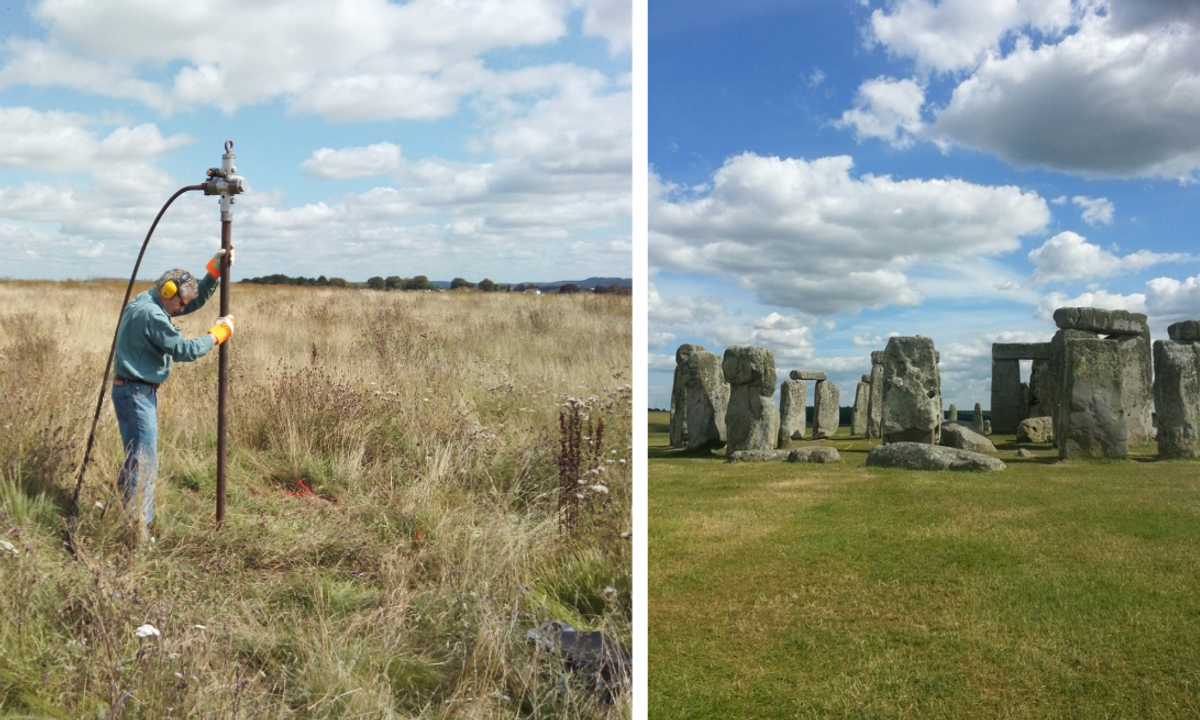
""These features were not simply dug and abandoned; they were part of a structured, monumental landscape that speaks to the complexity and sophistication of Neolithic society,""
""As no single technology can answer all the questions [linked to the discovery], multiple types of geophysics equipment was used to establish the size and shape of the pits. The exceptional size of the pits demanded a novel strategy to explore them without the need for a major, and very expensive, excavation.""
""largest known prehistoric structure in Britain""
A series of deep pits near Stonehenge in Wiltshire were carved by humans more than 4,000 years ago. The pits form a cohesive circle at Durrington Walls and Woodhenge, spaced at regular intervals, about ten metres in diameter and over five metres deep. The arrangement represents the largest known prehistoric structure in Britain. Multiple geophysical methods and narrow borehole sampling recovered animal and plant DNA and established pit dimensions without major excavation. The pits likely marked a sacred boundary tied to ceremonial activity and cosmological beliefs, and the diggers may have sought connection with the underworld.
Read at The Art Newspaper - International art news and events
Unable to calculate read time
Collection
[
|
...
]